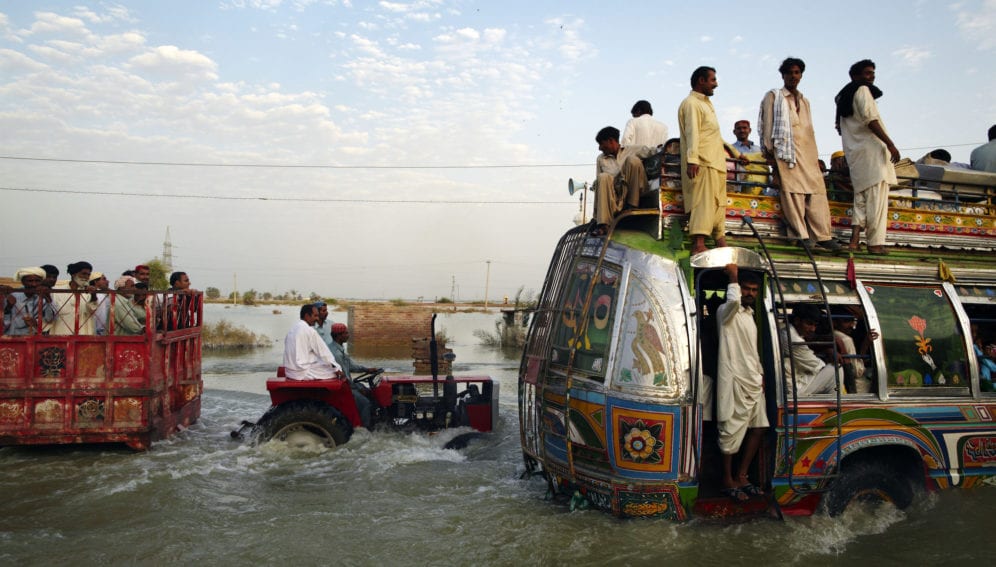By: Justin Petrone
Send to a friend
The details you provide on this page will not be used to send unsolicited email, and will not be sold to a 3rd party. See privacy policy.
[ISLAMABAD] With all four strains of the dengue virus now circulating in Pakistan and outbreaks of the viral disease being reported in new areas, this South Asian country now faces a serious health problem from the mosquito-borne pestilence, researhers say.
A study published August in The Virology Journal documents dengue serotypes prevalent in Pakistan during the 2011 outbreak in Punjab province, which claimed more than 365 lives, as well as the 2013 Swat Valley outbreak that killed more than 57 people.
It was the first time dengue had been reported in Swat, a tourist destination in the mountainous Khyber Pakhtunkhwa province, some 600 kilometres north of Punjab which is more amenable to the spread the disease because of higher population density and a hotter climate.
“Pakistan is witnessing dengue outbreaks continuously and it causes severe damage in the form of morbidities, mortalities, and socio-economic disturbances,” says lead author of the study Amjad Ali, a molecular biologist at the University of the Panjab, Lahore.
“In 2011 and 2013, dengue caused havoc throughout Pakistan by affecting thousands of people,” Ali said. “I decided to examine these dengue outbreaks molecularly to better our understanding and for possible preventive and remedial measures.”
Ali and his colleagues used real-time polymerase chain reaction tests to look at 600 blood samples collected at health centres in Punjab during the 2011 outbreak, and 740 samples collected in the Swat Valley during the 2013 outbreak. Specifically, they sought to identify which types of dengue were circulating in both areas, as well as their prevalence among the affected populations.They found that all four dengue virus serotypes — labelled DENV-1, DENV-2, DENV-3, and DENV-4 — were circulating in Punjab at the time of the 2011 outbreak, with DENV-2 and DENV-3 accounting for 42 and 41 per cent of those infected, respectively.
The incidence of DENV-1 was four per cent while DENV-4 was recorded in nine per cent of patients. Additionally, four per cent of those infected in Punjab had both DENV-2 and DENV-3 viruses, which may have had an impact on mortality rates.
Infection with one strain does not provide immunity against other strains so that person living in an endemic area could have up to four dengue infections during his or her life span.
“The finding that all four serotypes are circulating in Pakistan increases the likelihood of secondary infection and hence, severe disease.”
David Harley, Australian National University
In the Swat Valley, the investigators determined that only the DENV-2 and DENV-3 viruses had been circulating, accounting for 40 and 60 per cent of infections, respectively. They also found that eight per cent of patients in the Swat Valley had been infected by both versions of the virus.
Males aged 15—45 were hit hardest by the virus outbreaks in both locations.
The study showed for the first time that all four serotypes of dengue are present in Pakistan. “Concurrent infection determination in this study is a very important observation which leads to dengue haemorrhagic fever and dengue shock syndrome,” Ali said. “The phenomenon of antibody-dependent enhancement is also linked to concurrent infection.”
Ali said that the paper is a wake-up call for Pakistani officials to do more to understand, prevent, and treat dengue. “Concrete steps should be taken to cope with dengue, otherwise we will face severe consequences in the future.”
David Harley, an epidemiologist at the Australian National University, Canberra, said the paper provides more evidence of the ongoing increase in dengue incidence globally.
“Dengue is more likely to produce severe disease in secondary infections with a different serotype,” said Harley. “The finding that all four serotypes are circulating in Pakistan increases the likelihood of secondary infection and hence, severe disease.”
This piece was produced by SciDev.Net’s South Asia desk.














